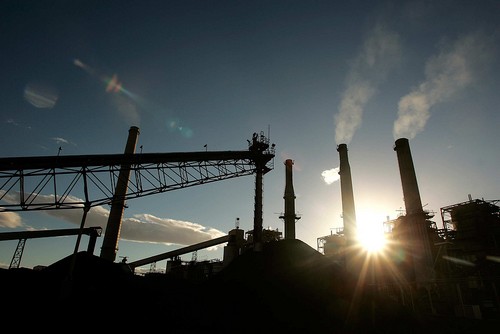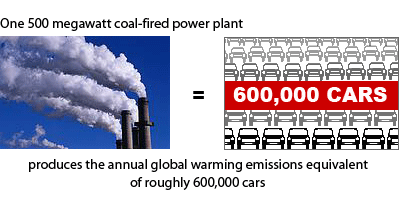

Climate and CCS debate: Coal can’t have it both ways
by Ken Ward Jr.
Charleston Gazette
July 23, 2009
 |
Yesterday, I wrote a story for the Gazette print edition about a new Harvard study that purports to detail the Realistic Costs of Carbon Capture from coal-fired power plants.
In a nutshell, the study puts the costs of capturing and storing greenhouse gas emissions from coal-fired power plants much higher than previous studies. Harvard researchers projected first-generation plants with CCS might double the cost of electricity. The costs might drop as the technology matures, but could still increase power production rates by as much as 50 percent.
This study also got some attention from The Wall Street Journal’s Environmental Capital blog, which called it a “reality check for clean coal.”
That’s probably right. But what kind of reality check? As I thought about this, it became clear that, in the national discussion over the American Clean Energy and Security Act, the coal industry is trying to have it both ways. Coal lobbyists want to argue that “clean coal” is here, but then also demand that the climate legislation working its way through Congress be further watered down, to give them more time to perfect and deploy carbon capture and storage technology.

First, let’s look at what coal is doing to trick the public into thinking that CCS technology is here, ready to go …
The other day, I tweeted and blogged about some comments singer/songwriter Steve Earle made in introducing his song “The Mountain” during a Mountain Stage radio show. I got a quick Twitter response from the folks at an industry front group called the American Coalition for Clean Coal Energy, who tweet under the name of their blog, AmericasPower:
@Kenwardjr Actually, the Edwardsport IGCC plant will reduce CO2 by up to 45%
http://sn.im/factuality5
That’s what these industry folks are doing. If anyone in the media dares to point out questions or problems with their scheme to capture carbon dioxide emissions and pump them underground, coal’s mouthpieces sprinkle the PR equivalent of pixie dust, to make it sound like CCS is some kinda magic potion to save us all.
Just take a look at the group’s blog, Behind the Plug, which is basically a collection of press releases aimed at showing that CCS will work, is working, and is going to be a huge part of our energy future.
Contrast that to the statements being made by coal industry officials in opposition to the current climate change bill:
– The National Mining Association, complains the bill “mandates near-term emission reductions before [CCS] technologies can be deployed.”
– CONSOL Energy vice president Steve Winberg, testifying to Congress last week, said CCS technologies “may be commercially viable by 2020, [but] they will not yet be deployed to a sufficient extent to avoid a serious impact on electricity prices and reliability.” He added:
Coal is our most abundant domestic energy resource and we need sustained investment in CCS technology and the time to develop, demonstrate and commercialize it. Emissions targets and timetables must be aligned with the pace of technology development.
– Friend of Coal skydiver Congressman Nick J. Rahall, explaining his vote in the House against the climate change bill, said the emissions reductions requirements are “still too high and too soon to incentivize rapid development and deployment of carbon capture and sequestration technologies so as to ensure coal-mining jobs in the future.”
– The United Mine Workers union, admitting that “the future of coal is intact” because of billions of dollars in CCS subsidies, still refusing to support the legislation and seeking more changes to benefit the industry.
– And don’t even get me started on my buddy, West Virginia Coal Association President Bill Raney, who fooled the Bluefield paper into writing this in an editorial:
According to Raney, the Obama administration is attempting to penalize the public — and coal producing regions such as southern West Virginia — based on a science that no one has a consensus on. Raney argues there are still differences of opinion regarding climate change and global warming.
Coal operators and coal-fired utilities (not to mention the mine workers union) want us to believe that CCS will work — and in fact is working — so that the public won’t demand a tougher climate bill, or tougher restrictions (or abolition) of mountaintop removal coal mining, toxic coal-ash impoundments, etc. That’s why they lure the media into writing glowing reports about CCS projects, without ever making it clear that they are very small, experimental efforts.
But, they also want us to believe that any really tough climate bill with a strong near-term emissions reductions requirement is just too much, too soon.
That doesn’t make for an honest debate.
The truth is, even experts don’t know if — let alone when — CCS is going to be ready to be installed on hundreds of coal-fired power plants across the country (and indeed, across the planet).
As I’ve pointed out before on Coal Tattoo, quoting Andrew Revkin’s New York Times’ Dot Earth blog:
Vaclav Smil, an energy expert at the University of Manitoba, has estimated that capturing and burying just 10 percent of the carbon dioxide emitted over a year from coal-fire plants at current rates would require moving volumes of compressed carbon dioxide greater than the total annual flow of oil worldwide — a massive undertaking requiring decades and trillions of dollars. “Beware of the scale,” he stressed.
You can read the paper in which Smil makes this argument here.
The new Harvard study I wrote about this week is yet another indication of the huge challenge that faces coalfield communities if coal is going to remain a viable energy source in a carbon-constrained world. Other previous major studies by MIT and the Union of Concerned Scientists drew similar conclusions and spelled out similar concerns.
There have been a lot of cheesy comparisons made between efforts to rework out energy system and the Apollo space program that put men on the Moon. But one area that seems worth thinking about is the plain talk President Kennedy gave the country about how going to the Moon was going to be hard, and that was part of why it was worth doing:
We choose to go to the moon in this decade and do the other things, not because they are easy, but because they are hard, because that goal will serve to organize and measure the best of our energies and skills, because that challenge is one that we are willing to accept, one we are unwilling to postpone, and one which we intend to win, and the others, too.
Cleaning up coal — if it can be done — might be an even bigger challenge. Can’t we at least be clear about that?
Posted by Arthur Caldicott on 23 Jul 2009